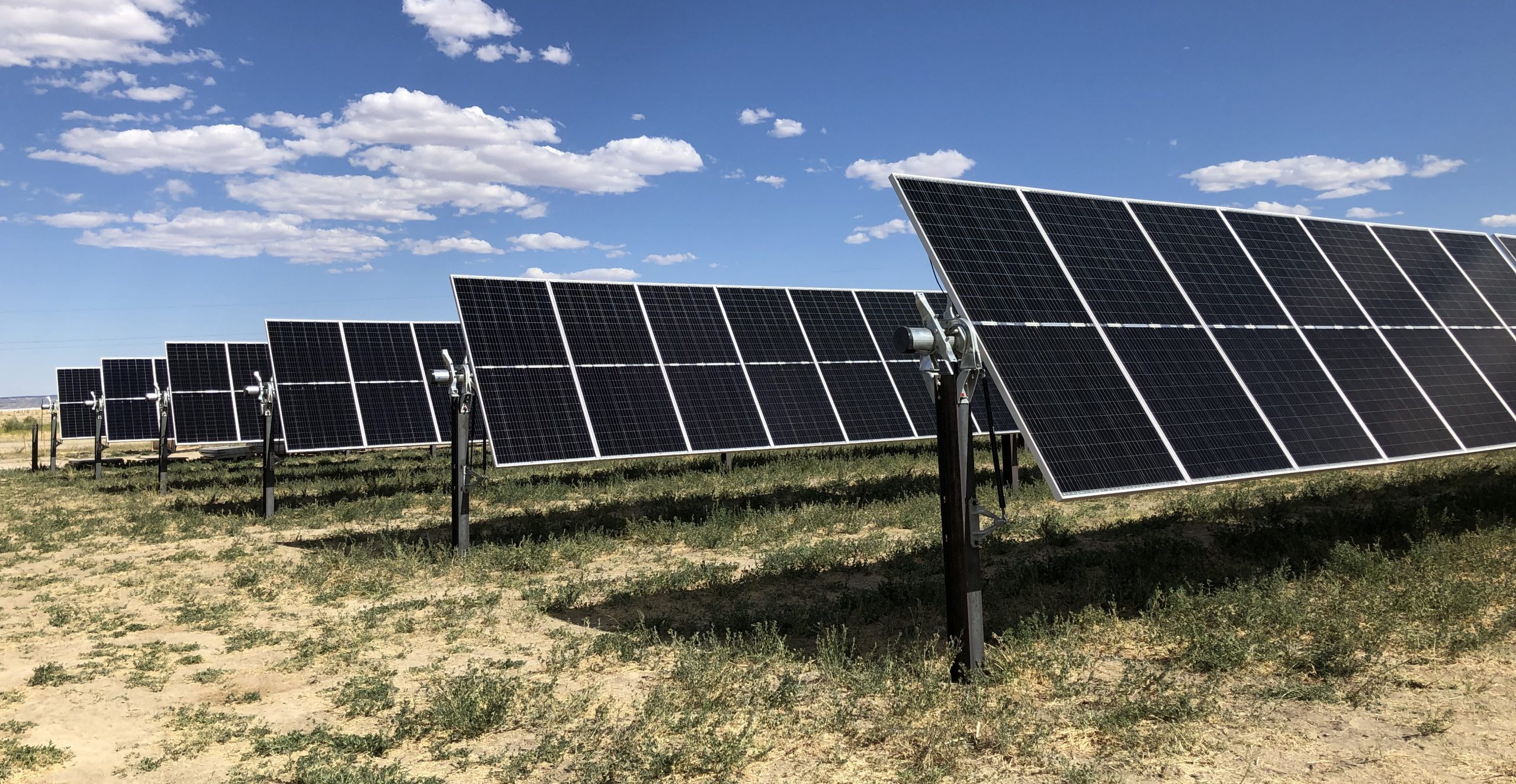
By University of Utah Communications
Originally published in @theU
University of Utah Facilities Management has taken another important step forward as a leader in energy and sustainability by signing a 25-year solar energy contract with the Castle Solar Project near Huntington, Utah. The contract will deliver 20 MW of solar energy to campus over its lifespan, powering the university toward its commitment to carbon neutrality by 2050.
A geothermal energy contract signed in 2018 made the U the first public college in the state to receive more than half of its electricity through renewable sources. The new solar contract will bring the university to 71% of all electrical energy coming from renewable sources.
Upon delivery, this new contract would rank total renewables of the University of Utah at number five among all colleges and universities (behind University of California, Arizona State University, Columbia University, and University at Buffalo SUNY) as reported by the EPA’s Green Power Partnership. The U’s current geothermal contract is currently ranked as the number one largest long-term contract of any college or university under the Green Power Partnership.
This commitment to clean energy and sustainable investments persists even amidst current budget concerns surrounding the COVID-19 pandemic. Cost projections show this significant move toward renewable energy will come without increased costs. This will allow the U to be responsible stewards of resources without creating an unnecessary burden. Leadership teams in Facilities Management spent years working to balance those considerations.
“Even the most perfect buildings and transportation systems, operated flawlessly, still need energy to run,” said Chris Benson, associate director of Sustainability and Energy in Facilities Management at the U. “We simply can’t be carbon neutral without sourcing our energy from clean and renewable sources. Off-site production is a great way to build and leverage economies of scale. With a combination of geothermal (our baseload) and solar (for peaking), loads are well-matched and costs remain well-managed.”
To operate nearly 300 buildings that support healthcare, research, education and housing, the university requires about 1% of all electricity and natural gas in the state of Utah. With long-term commitments to increase use of new, renewable energy, the U is significantly reducing the environmental impact of the electrical grid. This makes a measurable reduction to local emissions and improves air quality.
“We want to demonstrate what is possible by leading with sustainable choices in our operations,” said Kerry Case, chief sustainability officer at the University of Utah. “We recently launched an effort to identify additional strategies that will reduce the U’s greenhouse gas emissions and increase our community’s resilience to climate change. While we complete this important planning work, we must also take actions like this solar contract that have measurable impact.”
The solar energy contract has additional ties to the local environment and economy. It will utilize School and Institutional Trust Lands Administration (SITLA) land in Utah, which has been set aside to support public schools and institutions. The use of SITLA land will return some funds to the state of Utah through the lease agreement.
A new precedence has been set through the use of Rocky Mountain Power’s Schedule 32 rate tariff for the power purchase agreements between the U, Rocky Mountain Power, and each renewable energy supplier. This innovative approach allows large energy customers in Utah to choose their energy source; with the U leading the way, other large energy users in the community are now preparing to utilize this same structure.
“Rocky Mountain Power is proud to help the University of Utah meet its renewable energy goals with a project that will create jobs and tax revenue for rural Utah,” said Gary Hoogeveen, president and CEO of Rocky Mountain Power. “This project is a great example of innovative partnership with our customers to deliver a great result for both the university and communities supporting the renewable energy transition.”
The solar contract was originally awarded to Enyo Renewable Energy (ERE), a Utah-based wind and solar development company. ERE sold the project to D. E. Shaw Renewable Investments (DESRI), a leading national renewable energy developer-owner-operator. The solar energy project will be built by DESRI in Emery County and is expected to start delivering power mid-2022.
“Our team is pleased to partner with the University of Utah as it becomes a leader among universities across the country in providing cost-effective renewable power to its campuses,” said Hy Martin, chief development officer of DESRI. “With this solar power project, the university is driving the clean energy economy in Utah forward through investment in local communities.”
“MAP and Enyo formed Enyo Renewable Energy to create renewable energy projects that will lead the transformation of the Utah energy landscape by providing consumers with the local renewable energy sources they increasingly demand while providing substantial economic benefits to communities throughout the region,” said Christine Mikell, founder and CEO of Enyo. “We are delighted to have worked closely with Emery County, the state of Utah and regional stakeholders to ensure that the Castle Solar Project would be a success for all involved.”
This innovative contract was made possible with the legal expertise and hard work of the University of Utah General Counsel, the law firm of Gary, Dodge, Russell & Stephens, P.C. and Rocky Mountain Power’s renewable energy team.
Photo: DESRI’s Hunter Solar site in Emery County, Utah. By Jacqueline Flores/Swinerton Renewable Energy
